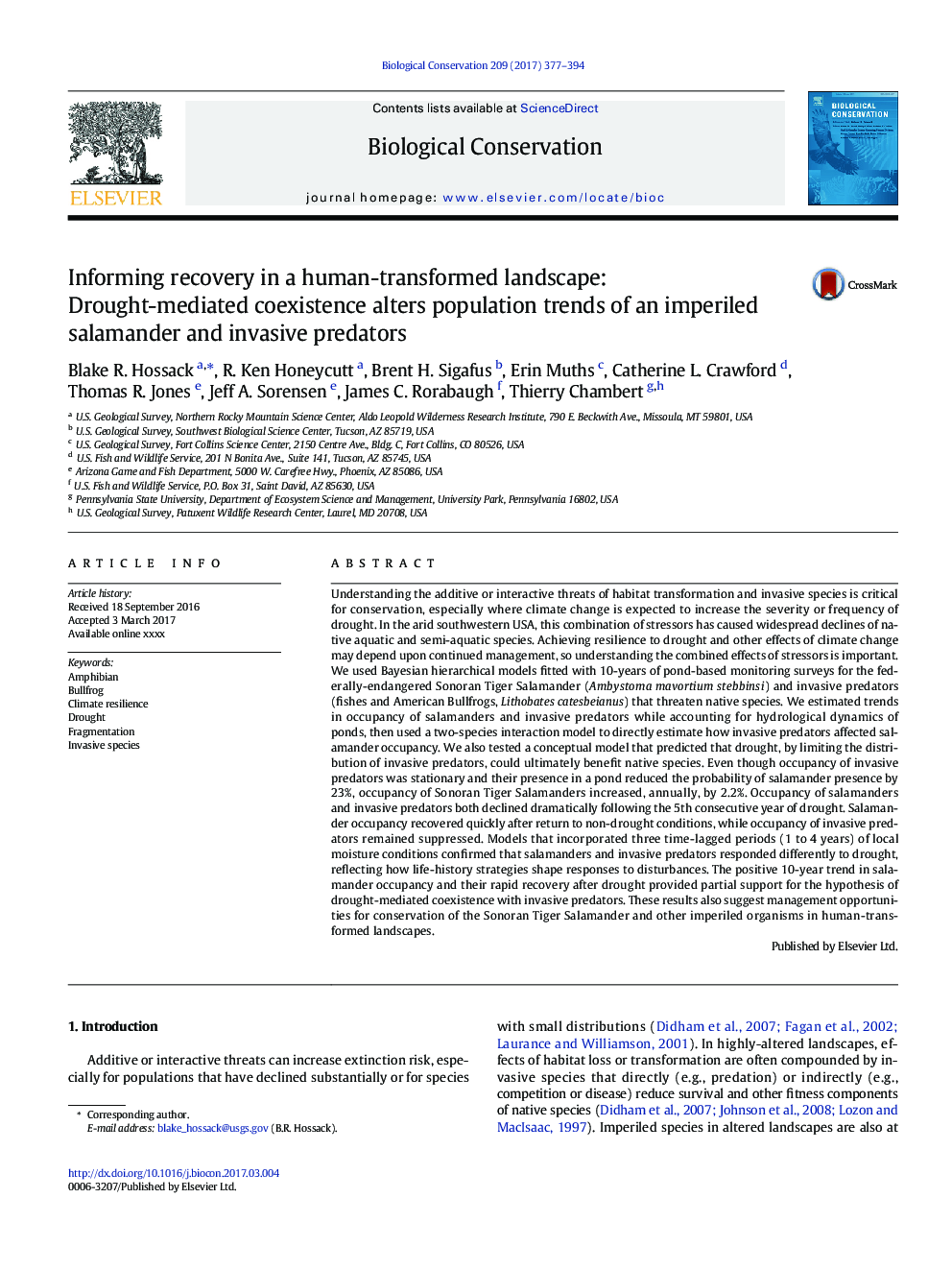| Article ID | Journal | Published Year | Pages | File Type |
|---|---|---|---|---|
| 5743341 | Biological Conservation | 2017 | 18 Pages |
Abstract
Understanding the additive or interactive threats of habitat transformation and invasive species is critical for conservation, especially where climate change is expected to increase the severity or frequency of drought. In the arid southwestern USA, this combination of stressors has caused widespread declines of native aquatic and semi-aquatic species. Achieving resilience to drought and other effects of climate change may depend upon continued management, so understanding the combined effects of stressors is important. We used Bayesian hierarchical models fitted with 10-years of pond-based monitoring surveys for the federally-endangered Sonoran Tiger Salamander (Ambystoma mavortium stebbinsi) and invasive predators (fishes and American Bullfrogs, Lithobates catesbeianus) that threaten native species. We estimated trends in occupancy of salamanders and invasive predators while accounting for hydrological dynamics of ponds, then used a two-species interaction model to directly estimate how invasive predators affected salamander occupancy. We also tested a conceptual model that predicted that drought, by limiting the distribution of invasive predators, could ultimately benefit native species. Even though occupancy of invasive predators was stationary and their presence in a pond reduced the probability of salamander presence by 23%, occupancy of Sonoran Tiger Salamanders increased, annually, by 2.2%. Occupancy of salamanders and invasive predators both declined dramatically following the 5th consecutive year of drought. Salamander occupancy recovered quickly after return to non-drought conditions, while occupancy of invasive predators remained suppressed. Models that incorporated three time-lagged periods (1 to 4Â years) of local moisture conditions confirmed that salamanders and invasive predators responded differently to drought, reflecting how life-history strategies shape responses to disturbances. The positive 10-year trend in salamander occupancy and their rapid recovery after drought provided partial support for the hypothesis of drought-mediated coexistence with invasive predators. These results also suggest management opportunities for conservation of the Sonoran Tiger Salamander and other imperiled organisms in human-transformed landscapes.
Related Topics
Life Sciences
Agricultural and Biological Sciences
Ecology, Evolution, Behavior and Systematics
Authors
Blake R. Hossack, R. Ken Honeycutt, Brent H. Sigafus, Erin Muths, Catherine L. Crawford, Thomas R. Jones, Jeff A. Sorensen, James C. Rorabaugh, Thierry Chambert,
